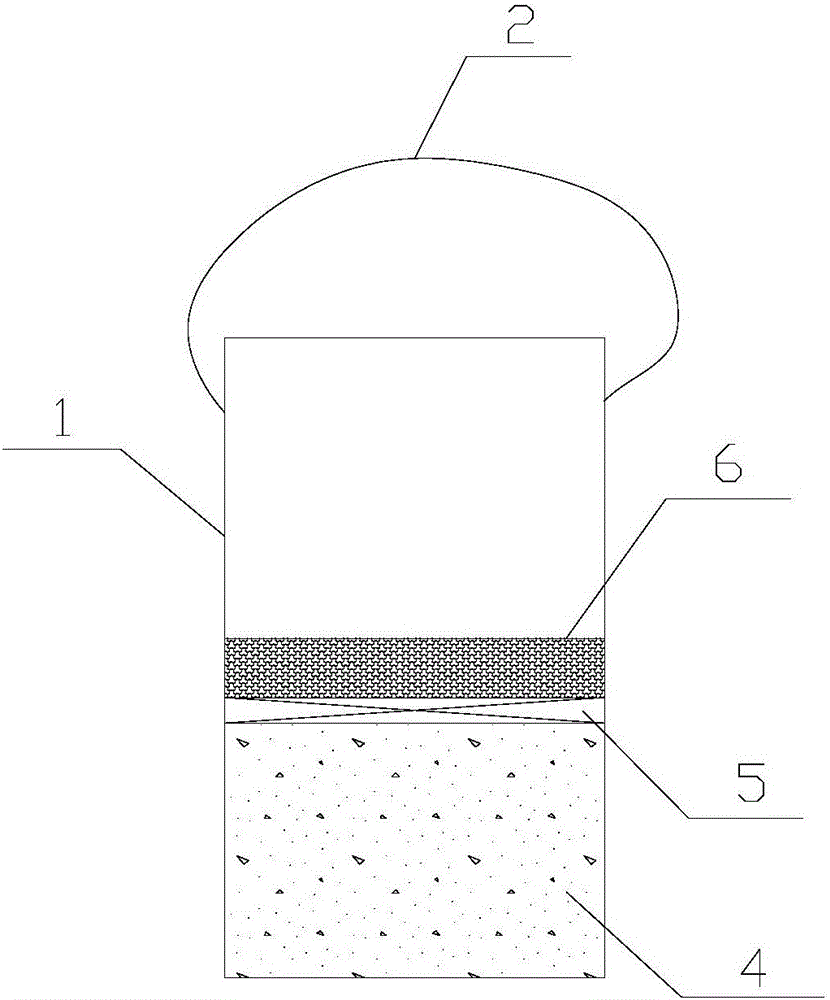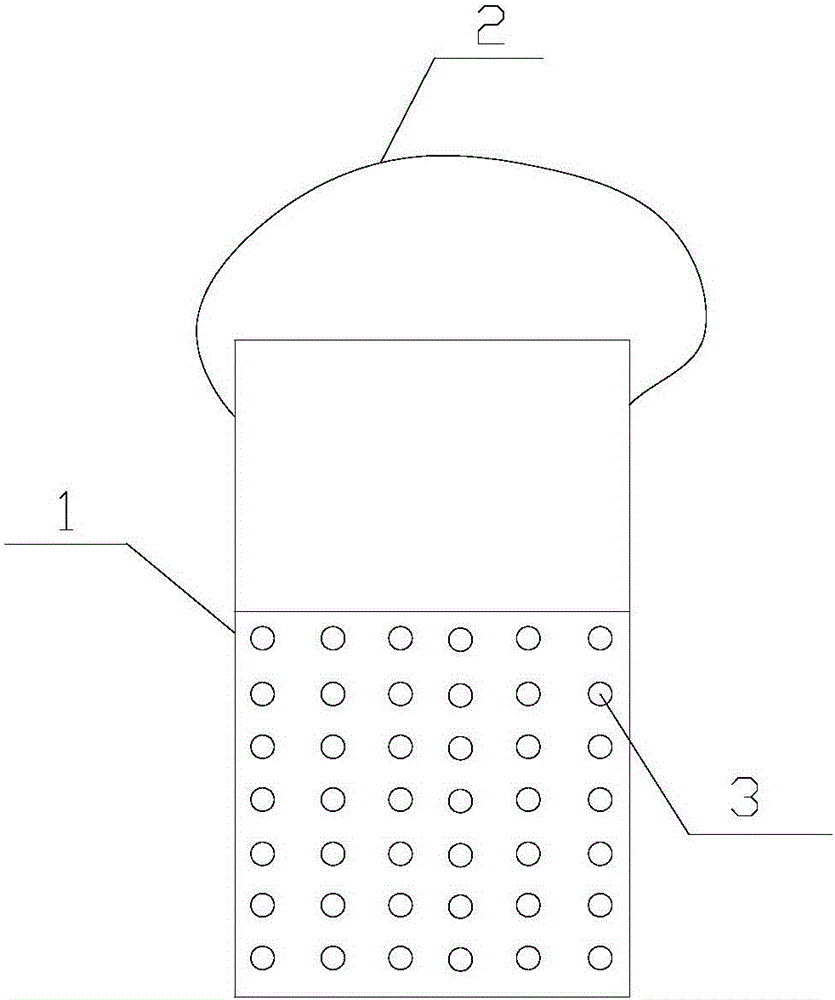Method for trapping and monitoring Chinese chive maggot larvae
A larvae and trapping technology, which is applied in the fields of catching or killing insects, applications, animal husbandry, etc., can solve the problems of poor growth, yellowing and withering, and influence of leeks, and achieves low cost, easy acquisition, and good trapping. effect of effect
- Summary
- Abstract
- Description
- Claims
- Application Information
AI Technical Summary
Problems solved by technology
Method used
Image
Examples
Embodiment 1
[0025] A method for trapping and monitoring chive maggot larvae, the specific steps are:
[0026] (1) Take by weighing 15g potato tubers, 15g green beans and 15g lettuce fleshy stems respectively, and boil the potato tubers and green beans in boiling water until soft;
[0027] (2) the above-mentioned potato tubers and lettuce fleshy stems are diced respectively and have a suitable volume with green beans, and after the three are mixed, they are used as bait materials;
[0028] (3) Adult traps are disinfected with 70% alcohol spray;
[0029] (4) the bait material is put into the larvae trap, and a layer of Yellow River sand is covered thereon;
[0030] (5) The above-mentioned larvae trap is placed in the leek field soil 5cm below to lure the leek maggot larvae; the leek field is selected as the 3-year-old leek experimental field of the Institute of Plant Protection, Shandong Academy of Agricultural Sciences, with a total area of 40m 2 , the trap takes 1 piece / 4m 2 The dens...
Embodiment 2
[0036] A method for trapping and monitoring chive maggot larvae, the specific steps are:
[0037] (1) Take by weighing 20g potato tubers, 20g green beans and 20g lettuce fleshy stems respectively, and boil the potato tubers and green beans in boiling water until soft;
[0038] (2) the above-mentioned potato tubers and lettuce fleshy stems are diced respectively and have a suitable volume with green beans, and after the three are mixed, they are used as bait materials;
[0039] (3) Adult traps are disinfected with 70% alcohol spray;
[0040] (4) the bait material is put into the larvae trap, and a layer of Yellow River sand is covered thereon;
[0041] (5) The above-mentioned larvae trap is placed in the leek field 5cm below the soil to trap leek maggot larvae; the leek field is selected as a four-year-old leek demonstration field in Tangwang, Jinan, Shandong, with a total area of 100m 2 , the trap takes 1 piece / 4m 2 The density is placed in the leek field, and the placeme...
Embodiment 3
[0045] A method for trapping and monitoring chive maggot larvae, the specific steps are:
[0046] (1) Take by weighing 15g potato tubers, 20g green beans and 10g lettuce fleshy stems respectively, and boil the potato tubers and green beans in boiling water until soft;
[0047] (2) the above-mentioned potato tubers and lettuce fleshy stems are diced respectively and have a suitable volume with green beans, and after the three are mixed, they are used as bait materials;
[0048] (3) Adult traps are disinfected with 70% alcohol spray;
[0049] (4) the bait material is put into the larvae trap, and a layer of Yellow River sand is covered thereon;
[0050](5) The above-mentioned larvae trap is placed in the leek field soil 7cm below to lure the leek maggot larvae; the leek field is selected as the 3-year-old leek experimental field of the Institute of Plant Protection, Shandong Academy of Agricultural Sciences, with a total area of 40m 2 , the trap takes 1 piece / 4m 2 The densi...
PUM
 Login to View More
Login to View More Abstract
Description
Claims
Application Information
 Login to View More
Login to View More - R&D Engineer
- R&D Manager
- IP Professional
- Industry Leading Data Capabilities
- Powerful AI technology
- Patent DNA Extraction
Browse by: Latest US Patents, China's latest patents, Technical Efficacy Thesaurus, Application Domain, Technology Topic, Popular Technical Reports.
© 2024 PatSnap. All rights reserved.Legal|Privacy policy|Modern Slavery Act Transparency Statement|Sitemap|About US| Contact US: help@patsnap.com










